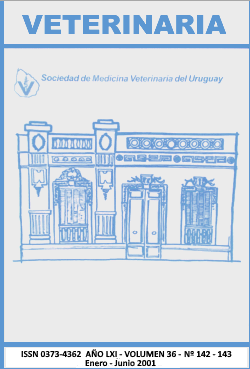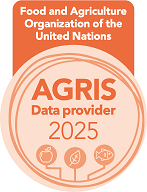Colostrum and mortality in dairy calves during the rearing period
Keywords:
Immunity, Colostrum, Mortality, Dairy calved, GlutaraldehydeAbstract
426 Holstein calves (males and females) aged between 3 and 10 days belonging to 7 different mil herds were used to determine the serum lg level by glutaraldehyde reagent. 79,58% of the sera were positive to the test, 10,09 and 10,33% were weakly positive and negative respectively. Our results show that between 16,6 and 24,2% of the animals (20,42 ± 3.828. nc =0.95) could be considered as having a deficient colostral intake. Under the conditions of the studied rearing system, the mortality during the milk fed period (42 days) is associated to circulating lg levels (X²=28,0860, p<.0001) with index of 4,72, 18,6 and 25% to positive, weakly possitive and negative animals to the glutaraldehyde test. Grouping weakly positive and negative animals, the association is maintained (X²=29,9065, p<.0001) with an odd ratio of 5,64 for this system. We concluded that with traditional handling of parturition, a high proportion of calved presents immunodeficiency and this factor predisposes to high mortality rate during the rearing period.











